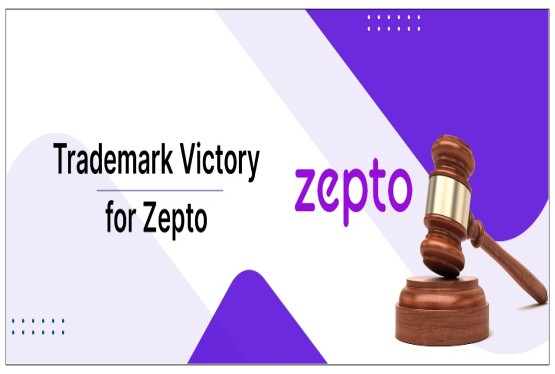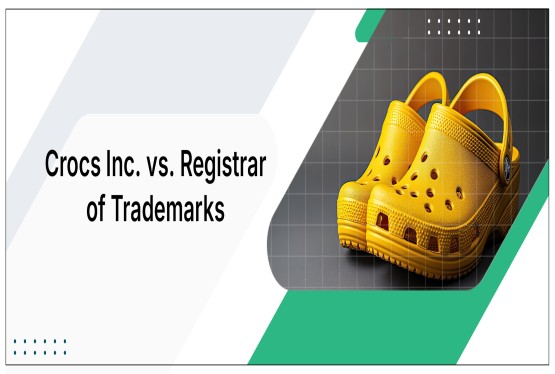Introduction
You are aware that we have been discussing trademark protection for your brand. But some of you may be asking if it is possible to trademark a character in your logo that represents your company. Perhaps you have a captivating mascot or a distinctive figure that perfectly represents your company. You may be asking yourself, “Can I legally protect this little guy or gal too?” at this point. The answer is yes! Trademark protection is not limited to words and names only. You can trademark the unique character that relates to your brand, whether it is a cartoon character, an abstract figure, or a stylized person.
In this article, we will learn if you can get a trademark for your character in the logo, legal provisions to protect it, what is trademark infringement and how to prevent yours from such an infringement.
Can you trademark a character in your logo?
Yes! You can trademark the unique character that relates to your brand, whether it is a cartoon character, an abstract figure, or a stylized person. There are a plethora of logos which contain trademarked characters from various industries. Characters that are obvious choices for one’s industry, like cows for dairy, receive narrower protection. In contrast, unexpected characters, like tigers for cereal or geckos for insurance, can enjoy much broader trademark rights.
For instance, we have Ronald McDonald, a clown who has become synonymous with McDonald's. Other fast-food restaurants might use clown characters, but they could not use one that resembles Ronald without running the danger of an infringement. The Pringles logo features a stylized cartoon caricature of the head of a male figure, Mr. P. Then, we have HELLO KITTY’s Kitten whose trademark has been obtained by Sanrio Co. Ltd. If you use an identical or similar Hello Kitty trademark for identical or similar goods and services, you might be infringing the registered mark.
Legal Framework for Trademarking Characters in Logos
Logos and designs serving as brand identities typically enjoy dual protection under intellectual property law. Trademarks are protected due to their importance in representing businesses. At the same time, their status as original artistic works containing creative components makes them eligible for copyright protection.
It is important to note that trademarks and copyrights are different forms of intellectual property, governed by separate laws. Copyright protects the artistic aspects of your logo, while trademark protects its use as a brand identity. To understand the legal framework supporting the trademarking of characters, we need to look at several key provisions
-
Section 11(3)(b) of the Trademarks Act 19991: This section discusses the relative grounds for the refusal of trademark registration, with a particular emphasis on the likelihood of confusion. It specifies that a trademark cannot be registered if it is identical or similar to an earlier trademark, and there is a risk of confusion among the public.
-
Section 45(1) of the Copyright Act, 19572: While your focus is on trademark protection, it is important to note that characters can also be protected under copyright law. Section 45(1) of the Copyright Act deals with the registration of copyright, providing a system for registering artistic works, including characters. This two-fold protection ensures that the visual representation of the character is protected from any unauthorized use.
-
Rule 24(3) of the Trademarks Rules, 20023: This rule elucidates the procedural criteria for trademark applications, including the depiction of marks. When seeking to trademark a character, it is required that you follow these guidelines to make sure that the character is properly represented and described in the application. This procedure is essential for successfully registering a character as a trademark.
What is Trademark Infringement?
Trademark infringement is the unauthorized use of a trademark or service mark on or in connection with goods or services in a manner that is likely to cause confusion or deception among the customers. A logo trademark infringement is a subset of this issue. It happens when a logo has been used or imitated in a way that makes it difficult for customers to tell the difference between the original and the copy. This can include using identical colour schemes, font, or general design components and characters to resemble the original logo's distinguishing features. Some of the famous logo trademark infringement cases:
-
Disney Enterprises Inc. v. Gurcharan Batra4: In this case, the Delhi High Court acknowledged trademark rights for Disney characters like Mickey Mouse, Minnie Mouse, Donald Duck, Daisy Duck, Goofy, and Winnie the Pooh. It was held that the use of these characters by defendants in connection to or on articles, publications, stationery, and other items in the course of their business, constituted infringement of the Plaintiff's registered trademarks and passing off of their business trademark. This case is one of the examples which shows that character trademarks are enforceable in India.
-
Disney v. deadmau: In 2014, Disney opposed Ronica Holding's (representing deadmau5) trademark application for a mouse head design, arguing that it was confusingly similar to Disney's Mickey Mouse brand. Ronica Holding attempted to invoke the “Morehouse Defence,” claiming they already owned a similar trademark registration, but the Trademark Trial and Appeal Board rejected this defense. In June 2015, Ronica Holding abandoned its application with Disney's consent, settling the dispute amicably.
-
Retail Royalty Company vs Pantaloons Fashion & Retail Limited & Ors5: Retail Royalty Company, the parent company of clothing store American Eagle, filed a case against Pantaloons Fashion & Retail in the Delhi High Court. The lawsuit claimed that the brand and logo are deceptively similar to its American Eagle Outfitters brand and logo. Though, the Court did not allow an exclusive right to American Legal over the mark “EAGLE”. However, the Court granted an ex parte interim injunction restraining Pantaloons from using deceptively similar trademarks.
-
Brown v. It’s Entertainment Inc6.: In this case it was found that the defendants were using the plaintiff’s fictional character Arthur (a cartoon aardvark) costumes for promotional and live entertainment purposes. The Court held that such unauthorized use of the Arthur character would diminish the distinctiveness that the plaintiffs enjoy with respect to the character.
Conclusion
The ability to trademark characters in logos offers businesses with a powerful tool for brand protection that goes beyond typical word and name trademarks. This two-fold protection includes both trademark and copyright law, provides full protection for distinctive brand characteristics. As businesses realize the potential of visual branding aspects in this digital era, understanding and utilizing trademark protection becomes increasingly important for maintaining brand integrity and preventing any unauthorized use of such trademarks..
How Can Businesses Prevent Logo Trademark Infringement? Key Strategies and Best Practices
A strong trademark helps a business stand out from its competitors, making it easier for customers to recognize and choose its products. When people like a trademark, they tend to keep buying from that brand and tell others about it. Logos are one of the marketing tools brands use to attract customers. But to avoid attracting imitators and get protection for your brand’s logo, businesses should follow these steps:-
-
Adopt a Strong Mark: In order to avoid confusion among customers, companies should develop and use a distinctive logo to gain recognition among their target public. This will enable customers to easily associate the mark with the brand's products or services.
-
Conduct a thorough search: Before finalizing a logo, conduct thorough search of existing logos, especially those related to your field of business. You must ensure that the mark does not infringe on a third party’s trademark.
-
Filing of Application: Collect all the necessary information, including a high-definition image of your logo, and prepare the application for submission. Then, submit the application to the trademark office, following the guidelines.
-
Examination and Registration: The trademark office will review your application, considering factors such as distinctiveness and uniqueness. Upon approval, your logo will be registered.
_______________________________
[1] Trade Marks Act, 1999, s. 11(3)(b)
[2] Copyright Act, 1957, s. 45(1)
[3] Trade Mark Rules, 2002, rule 24(3)
[4] Disney Enterprises Inc. v. Gurcharan Batra, MANU/DE/4122/2011.
[5] Retail Royalty Company vs Pantaloons Fashion & Retail Limited & Ors, CS (OS) 2872/2015.
[6] Brown v. It’s Entertainment Inc., 34 F. Supp. 2d 854, 860 (E.D.N.Y. 1999).
Frequently Asked Questions
1. Should you trademark a character?
Absolutely. If you own a small business and come up with a fictional character that represents your company, registering it as a trademark is a good decision. Trademarking your character is one of the best ways to protect it and make your brand stand out in the market.
2. How do I know if my logo is eligible for trademark protection?
Your logo should be distinctive and not confusingly similar to existing trademarks in your industry.
3. What's the difference between copyright and trademark for my logo?
Copyright protects the artistic aspects of your logo, while trademark protects its use as a brand identifier.
4. How do I file for a trademark?
Great question! If you are interested in filing for a trademark, you should read up on the benefits and process, and conduct a trademark clearance search.
5. How long does a registered trademark last?
A registered trademark initially lasts for 10 years from the date of registration.
6. How can Compliance Calendar LLP assist?
Compliance Calendar LLP can render complete assistance towards trademark registration. It will first inquire regarding the validity of the logo trademark, and ensure it does not infringe any of the already existing marks.
We ensure that all the legal requirements and formalities have been duly adhered to without any delay. For any queries, email us at info@ccoffice.in or WhatsApp/Call at 9988424211.






























_(b)_of_the_Trademark_Act,_1999_(1)_crop10_thumb.jpg)



_crop10_thumb.jpg)




























_crop10_thumb.jpg)
_crop10_thumb.jpg)






_crop10_thumb.jpg)








_crop10_thumb.jpg)
_crop10_thumb.jpg)



_crop10_thumb.jpg)




























_crop10_thumb.jpg)

















_crop10_thumb.jpg)






_crop10_thumb.jpg)












































































































































_crop10_thumb.jpg)




































_crop10_thumb.jpg)












_crop10_thumb.jpg)






















